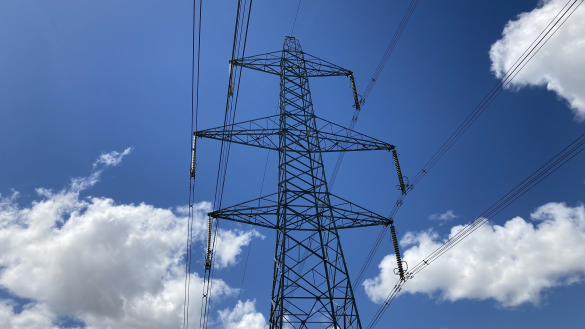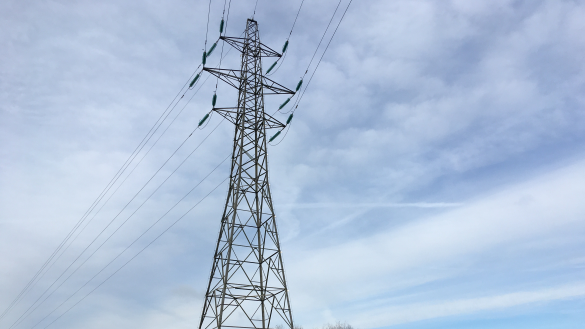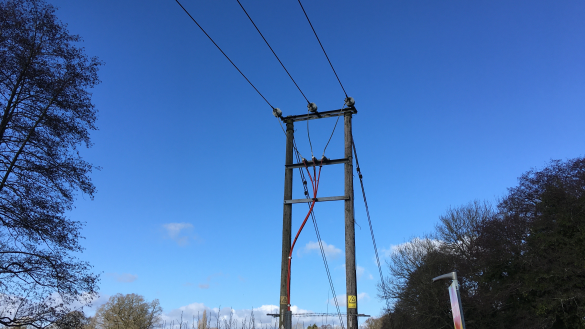Living or buying near overhead lines
Is living near an overhead line safe?
Overhead lines are an important part of our power infrastructure, but there are concerns around whether it is safe to live close to one. This is mainly due to the fact that they emit electric and magnetic fields (EMFs).
In the UK, there are exposure limits in place to protect against EMFs. These exposure limits have been set by independent international experts who carefully review all science around EMFs and health. Overhead lines, even at the highest voltages, will not produce EMFs higher than those exposure limits because they are designed that way.
To date, over forty years of research into the potential health effects of EMFs has been conducted and despite all that research there are no proven health risks below these EMF exposure limits.
Are there any risks?
A vast amount of research has been carried out over the past 40 years investigating the potential health effects of EMFs. Despite all that research, there are no proven health effects below the exposure limits. However, there is one area where some uncertainty exists and that’s around childhood leukaemia.
The evidence for this comes from statistical studies, which have found a small increased risk in childhood leukaemia incidence, for children born within 200 m of an overhead line or those with higher average daily exposure (more than 0.4 µT).
Studies have been conducted on mice and rats which show they do not develop the disease when exposed to EMFs in the laboratory. It is unclear whether the increase in childhood leukaemia is caused by EMFs or something else entirely. Therefore, the uncertainty is a weak statistical association only and no causation has been found.
The World Health Organization has classified magnetic fields as “possibly carcinogenic” which is the third lowest of four classifications due to this statistical evidence.
Recognising that there is this possibility, the UK introduced precautionary measures for overhead line designs to address that potential risk.
As the weight of the scientific evidence is against health effects, the UK Government confirmed that other than the exposure limits and precautionary design measure, no further restrictions to exposures are necessary.
What EMFs do overhead lines produce?
Electric and magnetic fields are produced wherever electricity is used – they are around us all the time in modern life. Overhead power lines – specifically, the wires, not the pylons that hold them up – are one source of these fields.
Electric fields are produced by voltage and magnetic fields by the current flowing through a conductor (wire). Most questions around EMFs relate to magnetic fields.
People are mostly exposed to EMFs from the distribution wires in their neighbourhoods and from wiring in homes. People are also exposed to higher fields for short durations when passing close to electrical appliances that are actively in use.
From the electricity system, high-voltage (transmission) power lines produce higher fields than substations. In the population as a whole, not many people live within 100 – 150 m of a transmission power line. But for those who do, this will also be a source of exposure in the home.
EMFs exposure limits in the UK
The UK Government set exposure guidelines at a national level for EMFs and the electricity system complies with these. The limits are designed to prevent all established effects of EMFs on the body.
The limits followed in the UK stem from an international body called ICNIRP (International Commission on Non-Ionizing Radiation Protection) and are the same limits set by the EU and used in many other countries around the world. ICNIRP is self-constituted but is formally recognised by the World Health Organisation.
The guideline limits for public exposure are expressed in volts per metre (V/m) for electric fields and microteslas (µT) for magnetic fields. All overhead lines are designed to comply with these limits, even directly underneath them – there is no need for any extra “safe distance” between a property and an overhead line to achieve compliance, and there are no restrictions on how close a property can be to an overhead line. This was looked at by a group called SAGE, but they concluded these measures were not necessary in light of the science.
What sort of overhead line is near me?
Overhead lines range from lower-voltage distribution lines on wood poles to higher-voltage transmission lines on lattice steel pylons.
Largest overhead lines on steel pylons – 400 kV
EMFs nearly always decrease to background levels in homes within 150 m of 400 kV overhead lines, but most of the time this distance is much shorter.
Overhead lines on wood poles – 11 kV
The fields typically fall to background levels in homes from a few metres to a few tens of metres of lines operating at 11 kV. In each case, we are talking primarily about the magnetic field; the electric field is screened very easily so does not pass through walls into homes. Other voltages of overhead line exist, and the magnetic fields fall between the ranges of the lines listed above.
Buying and selling a house
A nearby overhead line is one of many factors to take into account when considering buying a house, as are nearby roads, railways lines, industry, or anything else in the area.
When you are buying or selling a property, as part of your survey you may receive a report from an automated service that uses online data to identify features of interest close to the property.
These searches will often report the presence of overhead lines in the same way as they would with railways and industry.
These searches often report a substation or an overhead line that is at a distance too far for EMFs to be detectable. EMFs fall rapidly with distance from the source. It is widely accepted that the field has fallen to a background level at levels less than 0.2 μT. There is no UK policy against mortgages on homes near overhead lines.
Do you need more help?
We hope that this page answers all your questions, but should you need more information on electric and magnetic fields then contact the EMF Helpline:
Telephone: 0845 7023270
Email: [email protected]
We can talk you through the specifics of the overhead line that you are interested in and answer any questions you may have.
You may also find our booklet 'EMF The Facts' helpful.





